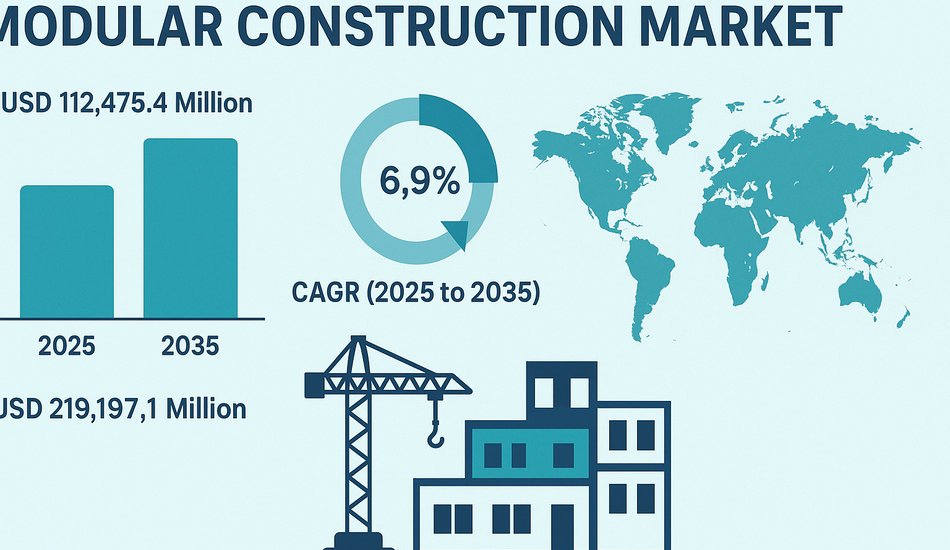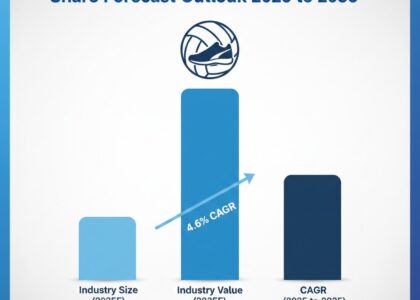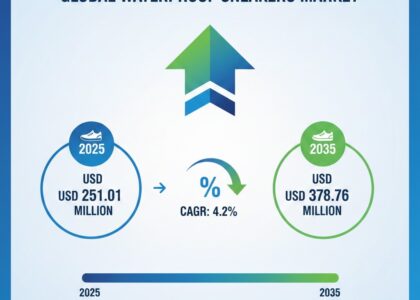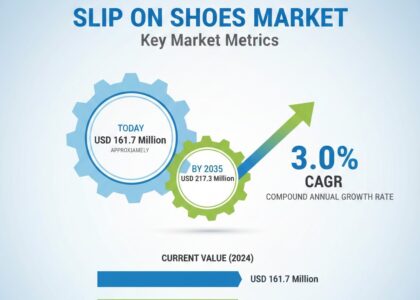The global modular construction market is on the brink of a substantial transformation, fueled by technological advancements and the surging need for affordable and sustainable housing solutions worldwide. According to recent estimates, the market is projected to grow at a remarkable CAGR of 6.9%, increasing from USD 112,475.4 million in 2025 to an impressive USD 219,197.1 million by 2035.
This renewed momentum stems from breakthroughs in 3D printing, AI-driven design, and digital twin technology, which are reshaping the modular construction landscape. These technologies enable unparalleled precision and scalability, making modular methods increasingly attractive for diverse applications, including affordable housing, disaster relief shelters, and environmentally conscious building projects.
Identify key trends, drivers, and challenges in the market, which will help vendors improve their strategies to stay ahead of their competitors. View our PDF Sample Report:
https://www.futuremarketinsights.com/reports/sample/rep-gb-16910
Key Drivers Steering Market Growth
A critical factor driving this growth is the intensifying global demand for cost-effective housing and infrastructure. Modular construction stands out as a highly efficient solution, offering quicker build times and significant cost savings without compromising on quality. This makes it an ideal approach for governments and private developers aiming to bridge the affordable housing gap and accelerate infrastructure development.
Moreover, the emphasis on green construction practices has amplified interest in modular techniques. Prefabricated modules generate less waste and minimize site disruption, aligning well with sustainable development goals and stringent environmental standards.
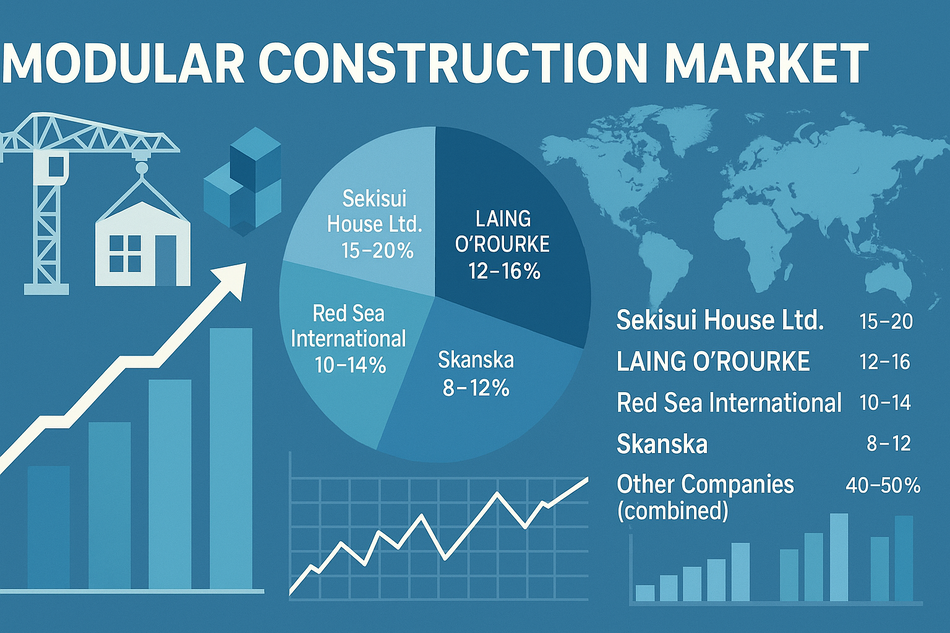
Emerging Trends Revolutionizing the Industry
The integration of digital tools and automation is a significant trend reshaping the sector. Builders and developers are embracing advanced software and robotics to enhance precision, streamline workflows, and reduce dependence on manual labor. This digital shift not only cuts costs but also mitigates delays, ensuring faster project completion and better resource management.
Companies are increasingly investing in holistic solutions that merge design, engineering, and construction, delivering comprehensive, end-to-end services to clients. This integrated approach is redefining project delivery models and strengthening customer confidence in modular methods.
Latest Heavy Engineering Solutions Reports: https://www.futuremarketinsights.com/industry-analysis/heavy-engineering-solutions
Regional Insights: Strong Growth Across Key Markets
Regionally, the United States is anticipated to capture a commanding 35% market share by 2035, showcasing robust growth driven by strong infrastructure spending and favorable policies supporting offsite construction.
Europe also demonstrates promising potential, with Germany forecasted to hold a 20% share of the global market by 2035, backed by a commitment to sustainability and innovative building standards. Meanwhile, China is expected to secure a 25% market share, fueled by rapid urbanization and large-scale affordable housing initiatives. Japan’s market is projected to expand moderately, achieving a 10% share by the same year.
Segment Analysis: Relocatable and Steel Modules Lead the Way
Among the various segments, relocatable modular construction remains dominant, anticipated to account for 60% of the market in 2025. This reflects the growing preference for flexible building solutions that can be easily transported and repurposed. Additionally, steel modular construction is projected to maintain a significant presence, with a notable 45% market share in 2025, thanks to its strength, durability, and design versatility.
Opportunities and Challenges Ahead
While opportunities abound, the industry faces some persistent challenges. A key hurdle is the lingering perception that modular construction falls short of traditional methods in terms of durability and quality. Overcoming this misconception is crucial for broader market acceptance.
Furthermore, a shortage of skilled labor and limited factory capacity continue to constrain production capabilities and add to logistical complexities. However, these barriers also open avenues for new entrants and established players to invest in workforce development and expand manufacturing infrastructure.
Browse Full Report Here: https://www.futuremarketinsights.com/reports/modular-construction-market
Competitive Landscape and Notable Developments
To maintain a competitive edge, industry leaders are ramping up investments in R&D, forging strategic partnerships, and pursuing mergers and acquisitions. A noteworthy example is Skanska AB’s acquisition of a 50% stake in UK-based Ideal Modular Homes in 2021, strengthening its modular capabilities.
Other recent developments include Daiwa House’s partnership with Capital Bay in October 2022 to expand modular construction across Europe and Laing O’Rourke Delivery Ltd.’s completion of the HS2 Interchange Station in Solihull in June 2022, underscoring the growing acceptance of modular methods in large-scale infrastructure projects.
Prominent players shaping the market include Bouygues Construction, Premier Modular Limited, KLEUSBERG GmbH & Co KG, Sekisui House Ltd., LAING O’ROURKE, Red Sea International, Skanska, DuBox, Wernick Group, CIMC Modular Building Systems Holdings Co., Ltd, Riko Hiše d.o.o, Lendlease Corporation, Modulaire Group, Guerdon, LLC, and Hickory Group.
As the modular construction industry evolves, stakeholders are well-positioned to capitalize on technological progress and rising demand for sustainable solutions, paving the way for a more resilient and efficient built environment.


